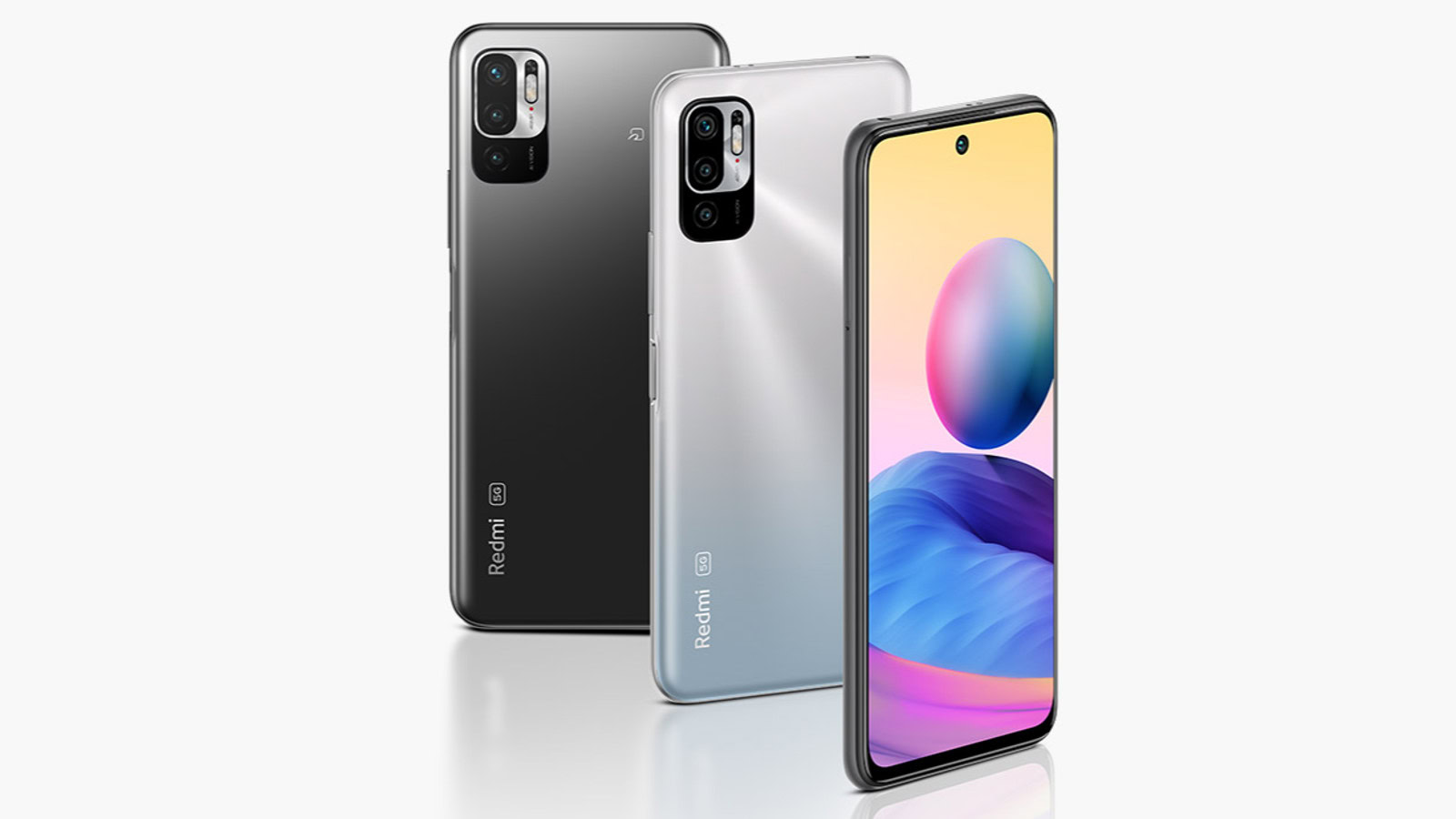Affiliate links on Android Authority may earn us a commission. Learn more.
Redmi Note 10 series buyer's guide: Everything you need to know
Published onSeptember 5, 2022
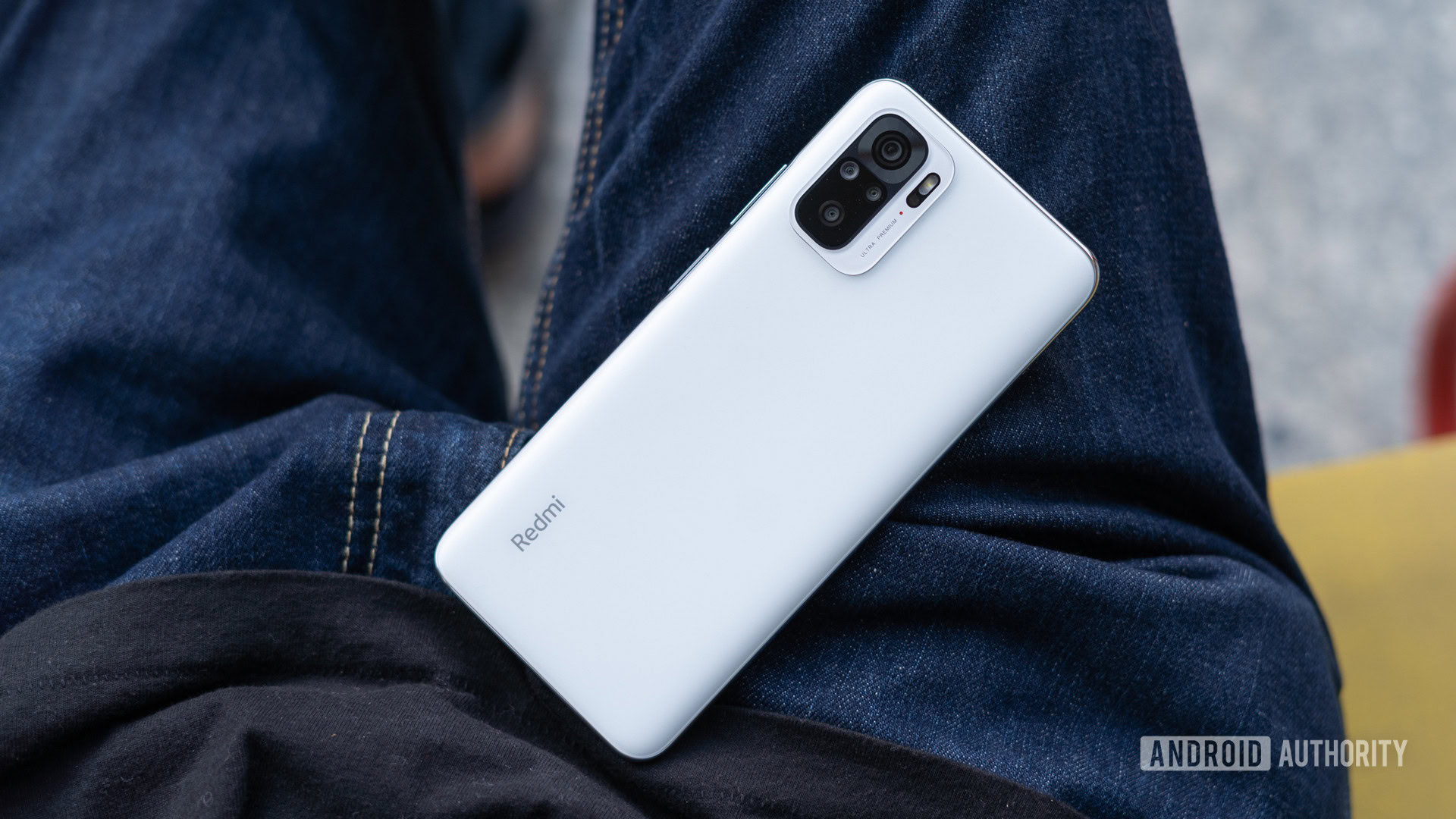
The Redmi Note series has long been considered one of the best budget phone families around, offering a quality mid-range experience at a very competitive price. The Redmi Note 10 series looks to continue this tradition.
Redmi has usually offered a standard and Pro model, but it shook things up back in 2020 by launching the Redmi Note 9 Pro Max. It’s shaking things up again by offering the Redmi Note 10, Redmi Note 10S, Redmi Note 5G, and Redmi Note 10 Pro (called Redmi Note 10 Pro Max in India). All phones bar the Redmi Note 5G skip 5G silicon and LCD screens in favor of 4G SoCs and OLED displays. But you’re still getting those big batteries that the series is known for.
Redmi Note 10 series at a glance
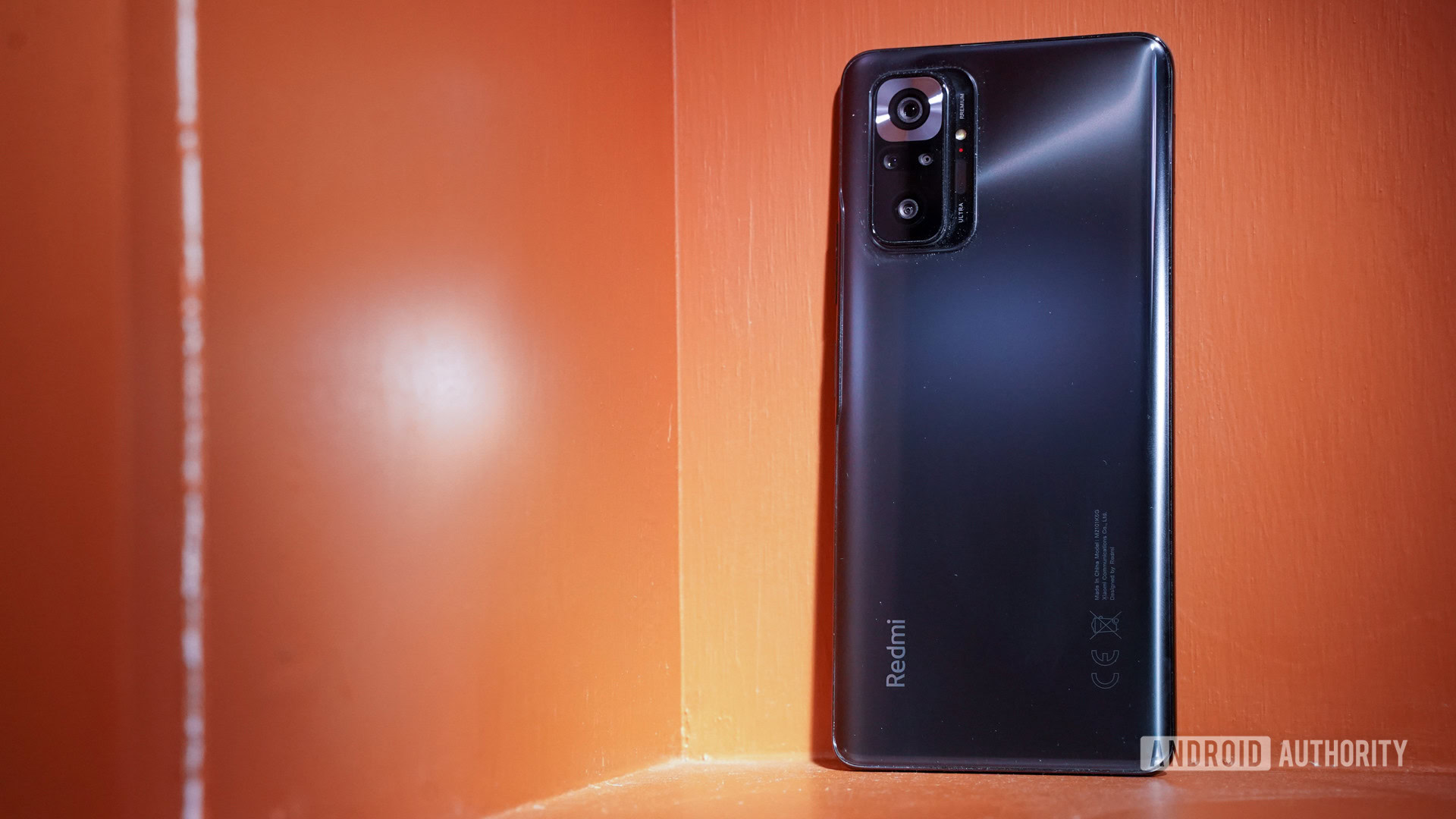
The Redmi Note series is Xiaomi and Redmi’s bread and butter, as it delivers plenty of notable features at a reasonable price point. This has resulted in the family being responsible for a ton of sales volume. We’re expecting the same results from the Redmi Note 10 range, as Redmi has managed to pack some great features into the mid-range and budget segment.
You are missing out on some additions by opting for these phones over more premium devices though. Some missing features include wireless charging, ultra-fast charging (50W+), and telephoto cameras. But there’s still plenty to be happy about.
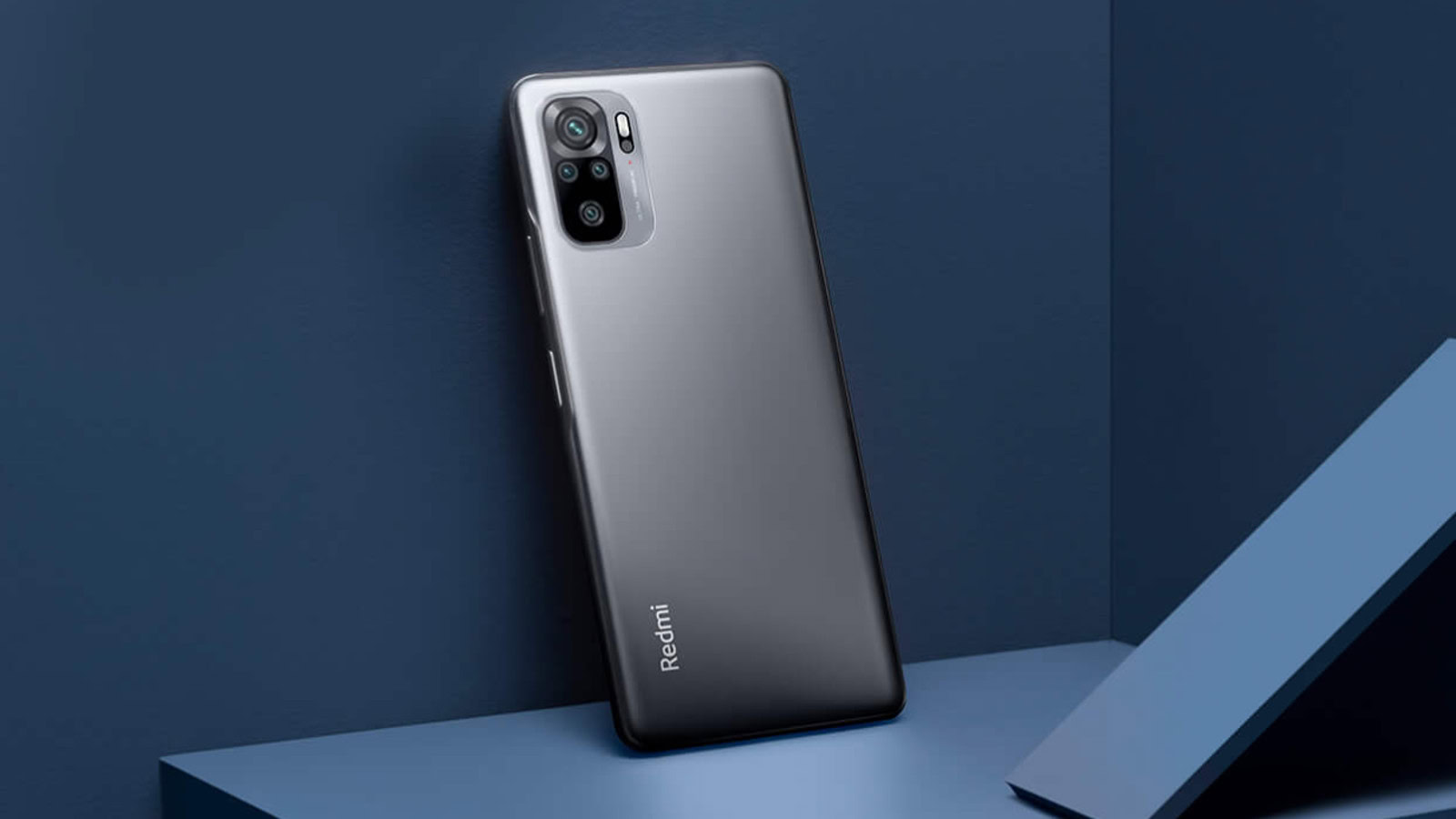
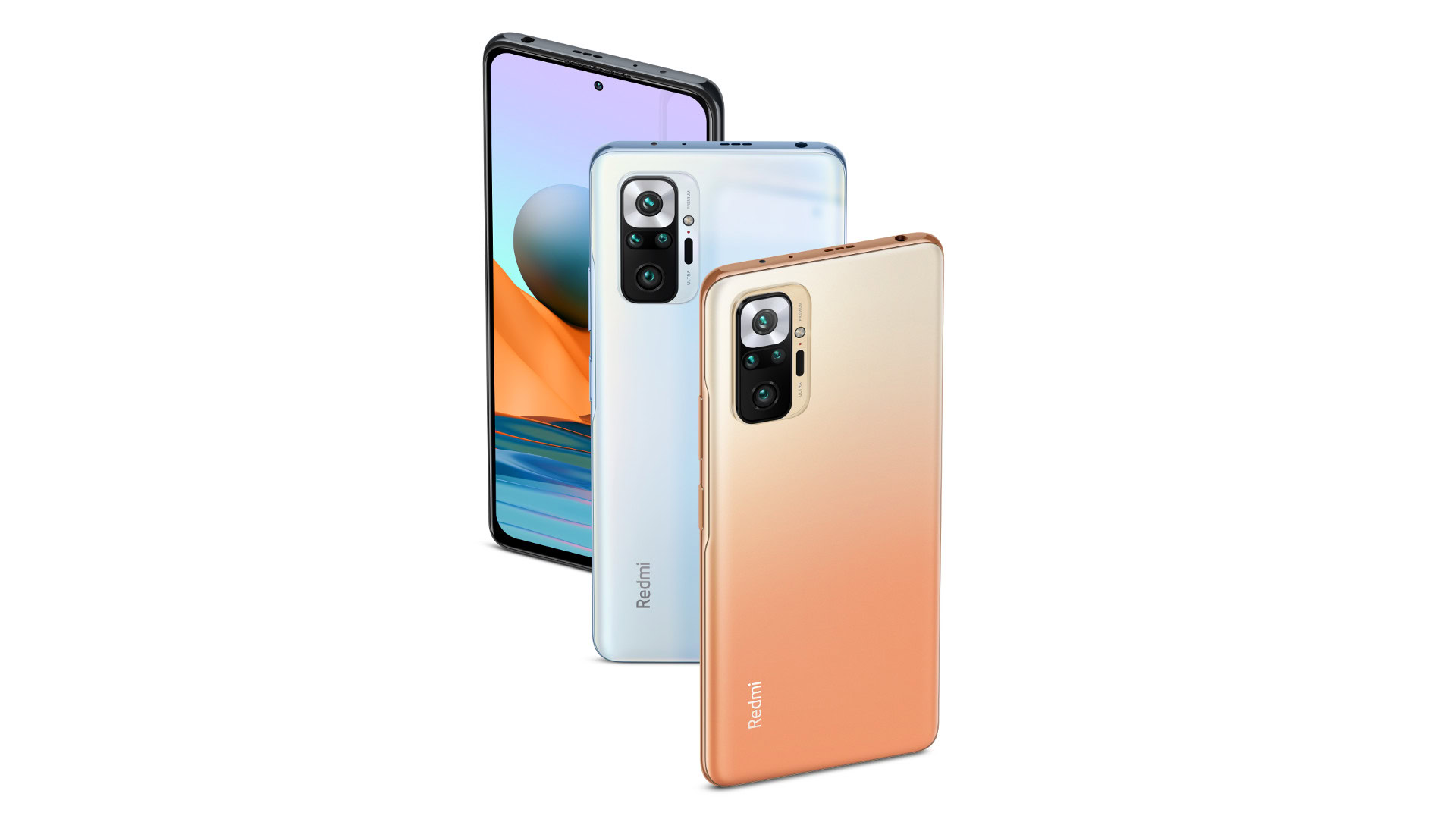
Is the Redmi Note 10 series worth buying?
The series has historically been for the budget-conscious consumer wanting a solid mid-range or lower-end device. The previous Pro model could be had for $300 and under, while the vanilla Redmi Note 9 variant launched at a starting price of $200. The pricing is just as affordable this time around.
The Redmi Note 10 Pro is the top-end model for someone wanting a few flagship stylings in their mid-range phone, while the standard Redmi Note 10 and Note 10S is for someone who wants a well-rounded device at the best price.
Meanwhile, those wanting 5G at a low price will need to look at the Redmi Note 10 5G. Aside from new-generation cellular connectivity, it’s essentially positioned at the bottom of the pile as far as features and specs are concerned.
Whether or not a Redmi Note 10 phone is worth buying depends on what you’re looking for. They are not the latest ones anymore, since the Redmi Note 11 series has already been launched.
Redmi Note 10 series specs
| Redmi Note 10 Pro | Redmi Note 10S | Redmi Note 10 | Redmi Note 10 5G | |
|---|---|---|---|---|
Display | Redmi Note 10 Pro 6.67 inches Super AMOLED FHD+ 120Hz | Redmi Note 10S 6.43 inches Super AMOLED FHD+ 60Hz | Redmi Note 10 6.43 inches Super AMOLED FHD+ 60Hz | Redmi Note 10 5G 6.5-inch LCD FHD+ 90Hz |
Chipset | Redmi Note 10 Pro Qualcomm Snapdragon 732G | Redmi Note 10S MediaTek Helio G95 | Redmi Note 10 Qualcomm Snapdragon 678 | Redmi Note 10 5G MediaTek Dimensity 700 |
GPU | Redmi Note 10 Pro Adreno 618 | Redmi Note 10S Mali-G76 3EEMC4 | Redmi Note 10 Adreno 612 | Redmi Note 10 5G Mali-G57 MC2 |
RAM | Redmi Note 10 Pro 6/8GB | Redmi Note 10S 6/8GB | Redmi Note 10 4/6GB | Redmi Note 10 5G 4/6GB |
Storage | Redmi Note 10 Pro 64/128GB | Redmi Note 10S 64/128GB | Redmi Note 10 64/128GB | Redmi Note 10 5G 64/128GB |
Battery | Redmi Note 10 Pro 5,020mAh USB-C 33W charging | Redmi Note 10S 5,000mAh USB-C 33W charging | Redmi Note 10 5,000mAh USB-C 33W charging | Redmi Note 10 5G 5,000mAh USB-C 18W charging |
Cameras | Redmi Note 10 Pro Rear: 108MP standard 8MP Ultra-wide 2MP macro 2MP depth sensor Front: 16MP | Redmi Note 10S Rear: 64MP standard 8MP Ultra-wide 2MP macro 2MP depth sensor Front: 13MP | Redmi Note 10 Rear: 48MP standard 8MP Ultra-wide 2MP macro 2MP depth sensor Front: 13MP | Redmi Note 10 5G Rear: 48MP standard 2MP macro 2MP depth sensor Front: 8MP |
Headphone jack | Redmi Note 10 Pro Yes | Redmi Note 10S Yes | Redmi Note 10 Yes | Redmi Note 10 5G Yes |
Software | Redmi Note 10 Pro MIUI Android 11 | Redmi Note 10S MIUI Android 11 | Redmi Note 10 MIUI Android 11 | Redmi Note 10 5G MIUI Android 11 |
Colors | Redmi Note 10 Pro Onyx Gray Glacier Blue Gradient Bronze | Redmi Note 10S Onyx Gray Pebble White Ocean Blue | Redmi Note 10 Onyx Gray Pebble White Lake Green | Redmi Note 10 5G Chrome Silver Graphite Gray Nighttime Blue Aurora Green |
Dimensions and weight | Redmi Note 10 Pro 164 x76.5 x 8.1mm 193g | Redmi Note 10S 160.46 x 74.5 x 8.29mm 178.8g | Redmi Note 10 160.46 x 74.5 x 8.29mm 178.8g | Redmi Note 10 5G 161.81 x 75.34 x 8.92mm 190g |
What reviewers are saying about the Redmi Note 10 series
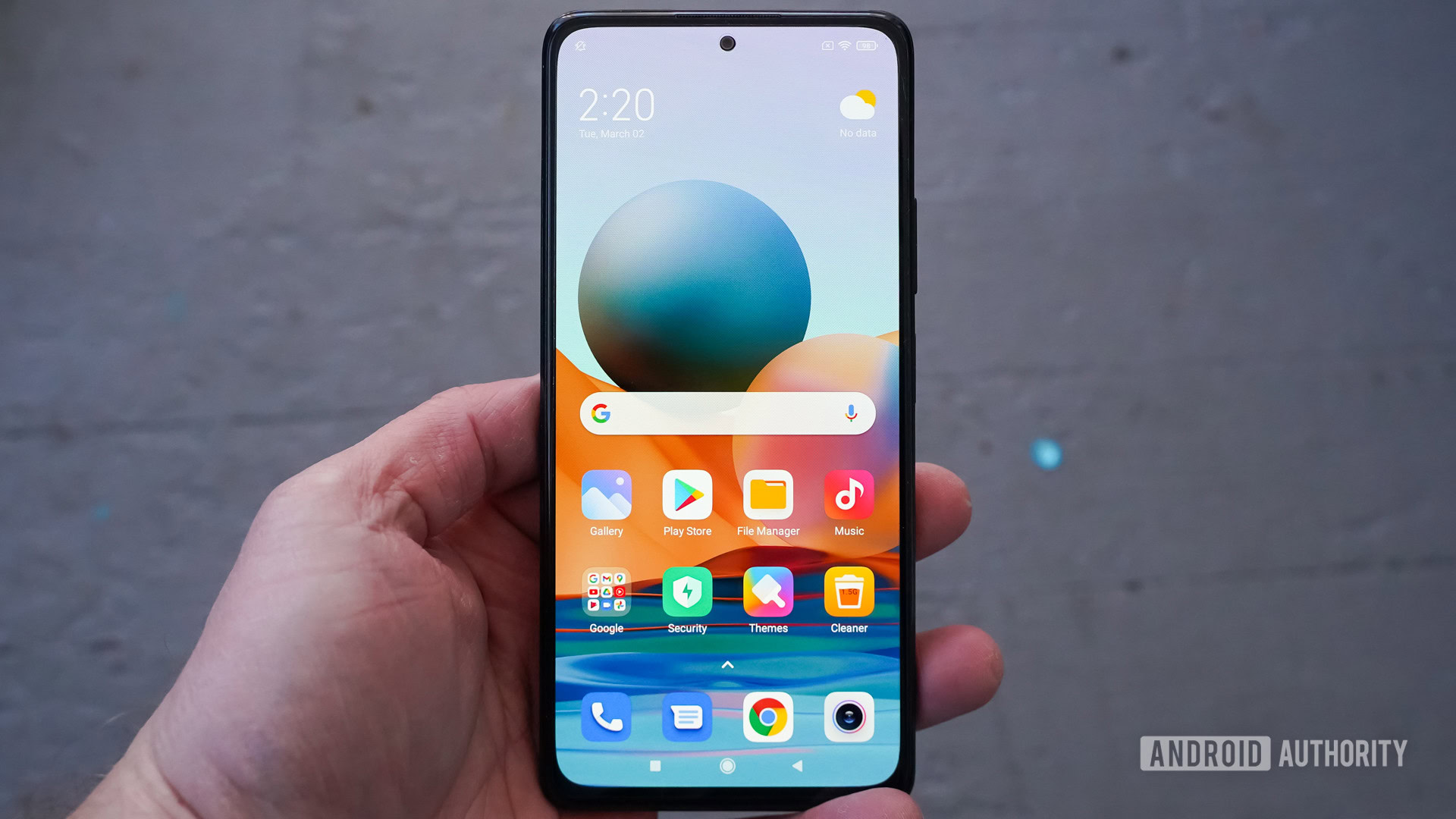
Android Authority‘s Eric Zeman reviewed the Redmi Note 10 Pro (i.e. the Pro Max in India) and called it a “strong offering” and “compelling” choice for an upper mid-tier smartphone. Eric specifically pointed to strengths like the design, 120Hz OLED screen, battery life, dual SIM and microSD card support, and price tag.
Our verdict: Redmi Note 10 Pro review | Redmi Note 10 review
It wasn’t all smooth sailing for the Note 10 Pro though, as our reviewer also knocked the device for its middling performance, “uneven” cameras, speaker quality, and video recording that tops out at 4K/30fps. Our Indian colleague Dhruv Bhutani also criticized the Indian variant for having a ton of bloatware.
Dhruv also reviewed the standard Redmi Note 10, saying it offered a great everyday experience and a low price. He specifically praised the design, IP53 splash resistance, speedy charging, and great main camera. He did however note (heh) that it didn’t have the best performance in its category and that the secondary cameras could be better. Still, he called it an easy recommendation and a “well-rounded experience.”
What other reviewers from around the web think
- Mike Lowe of Pocket-Lint called the Redmi Note 10 Pro quite possibly the “most accomplished affordable phone” of the year. He heaped praise on the price point, the screen, battery life, main camera, and macro sensor. It wasn’t all good for Mike, though, as he criticized the “distractingly shiny” punch-hole cutout, giant camera bump, lack of OIS, and minor software quirks.
- XDA-Developers‘ Ben Sin called the Pro device a great choice if you’re looking for a mid-ranger. He specifically pointed out upsides like “really good” battery life, an “easy and fun to use” main camera, and the price tag. Ben said this would be a big upgrade for someone coming from a similarly budget phone released a few years ago. He did, however, lament the ultrawide camera quality, focus issues with the macro camera, minor quibbles with MIUI, and lag when switching from the main camera to the ultrawide shooter.
- Jamshed Avari of Gadgets 360 also spent some time with the Redmi Note 10 Pro Max, as it’s called in India. He felt that it was a “compelling” phone but noted that the India-only Redmi Note 10 Pro (identical save for a 64MP main camera instead of a 108MP sensor) was a better deal at Rs 3,000 (~$40) less. Nevertheless, he praised the screen quality, slick design, “good” main camera, the ability to get “spectacular” macro shots, and the chipset. Jamshed took issue with the battery life (saying it could’ve been better), “annoying” fingerprint scanner, the shiny punch-hole cutout, and problematic focusing when using the macro camera.
What AA readers think of the phones
We asked Android Authority readers what they thought of the Redmi Note 10 series shortly after launch, and almost 1,100 votes were tallied at the time. The results show that 83% of respondents think the series is hot, compared to almost 17% who thought otherwise.
What’s the difference between the Pro and Note 10/Note 10S?
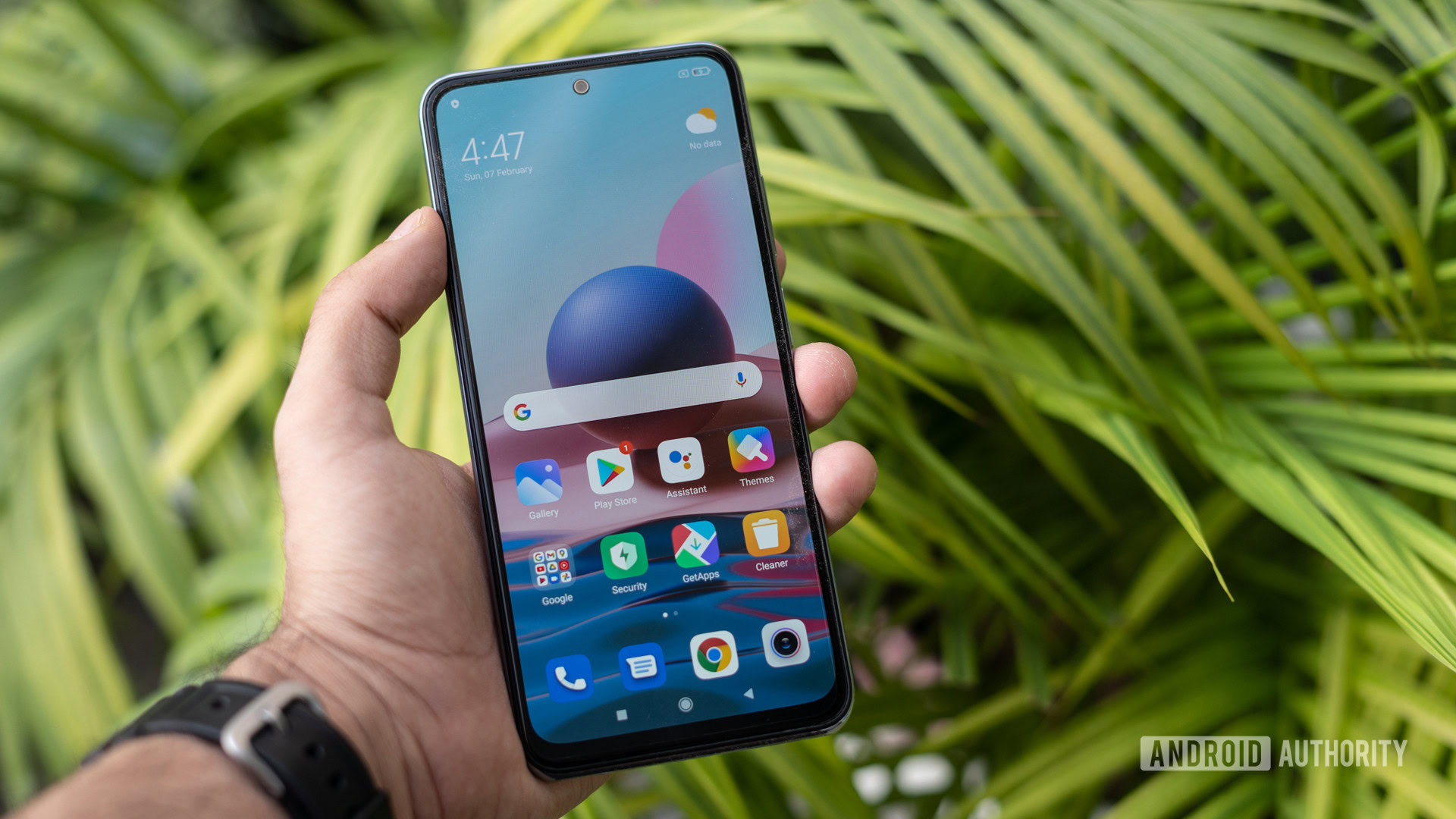
The Redmi Note 10 Pro offers a 120Hz OLED screen, a 108MP primary camera, and a 5MP telephoto macro lens. You’re also getting a Snapdragon 732G chipset that’s among the better 4G chips out there, but is still more of a sideways move than a huge upgrade over last year’s phone.
Meanwhile, the Redmi Note 10 and Note 10S strip a few of these features back but deliver respectable specs anyway. This is the first time we get an OLED screen in the Redmi Note series, but the vanilla models are packing a 60Hz OLED panel. You’re also getting less impressive chipsets on paper and lower resolution main cameras by opting for the Redmi Note 10 and Note 10S.
Another feature seen on the Redmi Note 10 Pro but missing on the other devices is a 5MP telephoto macro camera, as the other phones make do with measly 2MP sensors. Otherwise, the Note 10, Note 10S, and Note 10 Pro also share an 8MP ultra-wide camera and 2MP depth sensor.
All the 4G phones are packing a big battery, suggesting that two-day usage is within reach. And they’ve all got 33W wired charging for brisk top-ups too.
Redmi Note 10 5G
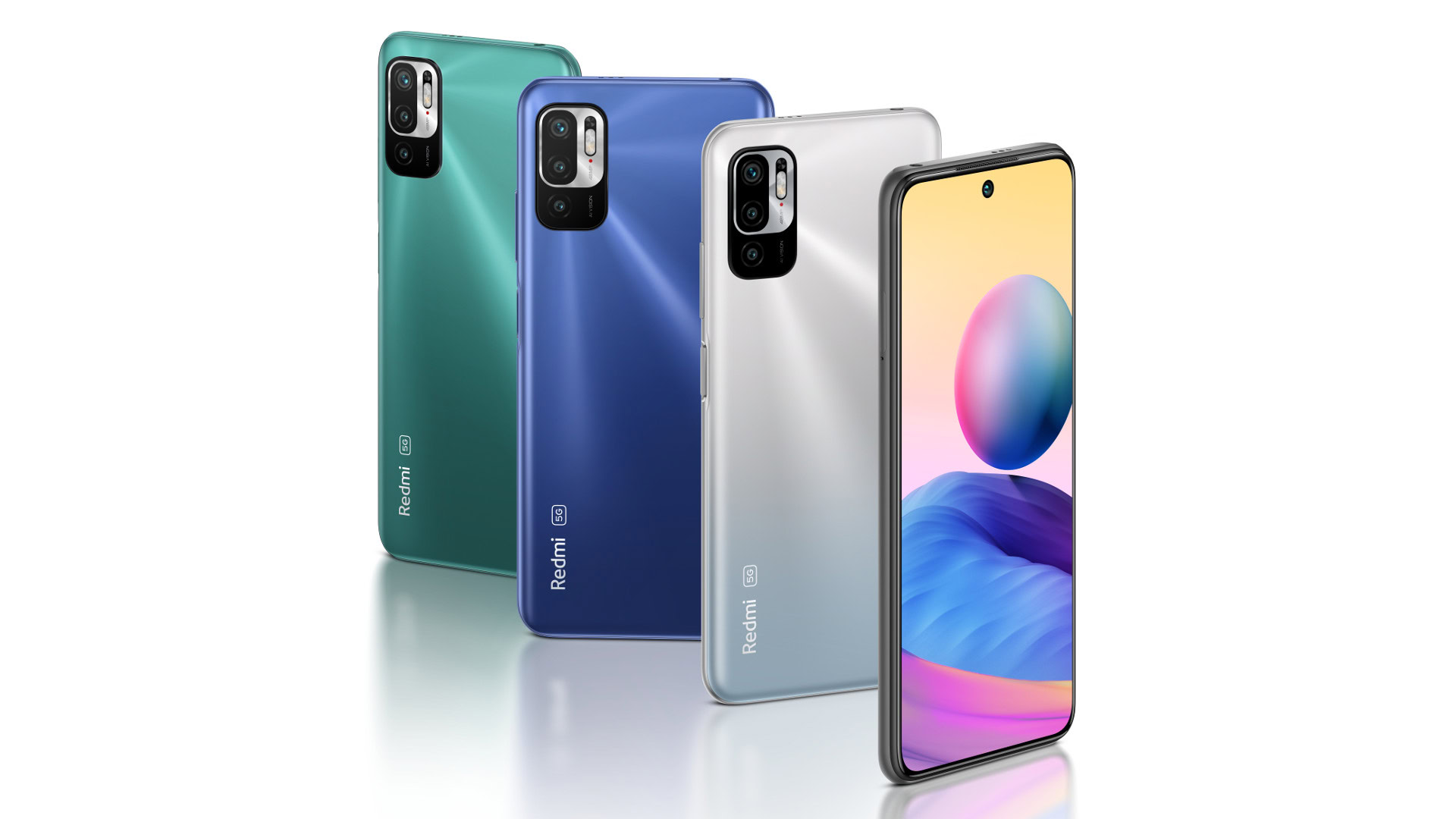
It seems like the Redmi Note 10 5G is a one-trick pony, with that trick being 5G connectivity (and 5G+5G dual SIM) via the lower mid-range Dimensity 700 processor. Otherwise, we have an 8MP selfie snapper, a 90Hz FHD+ LCD screen, and a triple rear camera setup (48MP+2MP+2MP) that omits an ultra-wide camera.
The Redmi Note 10 and Note 10S pack a Snapdragon 678 chipset and MediaTek Helio G95 SoC respectively, delivering 4G connectivity. But the two phones also have a 13MP front-facing camera, a 60Hz OLED display, and a quad-camera setup that includes an 8MP ultra-wide shooter. The Redmi Note 10 has a 48MP primary camera, while the Note 10S ups the resolution to 64MP.
All three phones offer a 5,000mAh battery, but the Note 10 and Note 10S offer 33W wired charging versus 18W top-ups for the 5G variant. Another notable difference is that the Note 10 omits NFC completely, while the Note 10S and Note 10 5G have NFC in certain markets.
The Note 10 5G also lacks an IP rating, while the rest of the Note 10 family all offer IP53 ratings for splash resistance.
Redmi Note 10 Pro: Global versus Indian variants

Xiaomi has previously launched Redmi Note models in India that differ from their similarly named counterparts, and this trend continues with the Redmi Note 10 Pro. The global Redmi Note 10 Pro features a 108MP main camera, while the Indian model delivers a 64MP primary camera. Otherwise, everything else is identical.
However, Indian fans wanting that global 108MP Redmi Note experience can opt for the Redmi Note 10 Pro Max, which is literally the global Redmi Note 10 Pro.
Redmi Note 10 Japan Edition
Redmi also launched a Japan-exclusive Redmi Note 10 model, dubbed the Redmi Note 10 Japan Edition. It’s essentially the Redmi Note 10 5G with a few major changes.
For starters, this is the first Redmi phone with full-fledged water resistance (IP68). Japan has enjoyed water-resistant phones for years before it became a mainstream option around the globe, and it looks like Redmi recognized this fact.
Another notable tweak is that the 5G model’s Dimensity 700 chipset has been swapped out for a Snapdragon 480 5G SoC. Otherwise, you’re also seeing a 4,800mAh battery instead of the Redmi Note 10 5G’s 5,000mAh battery.
Are the Redmi Note 10 series cameras any good?
Eric called the Redmi Note 10 Pro’s 108MP main camera versatile and adequate, but felt the Pixel 4a’s image quality was better. Again, this shows that image processing is more important than a ton of megapixels.
Google’s cheapest Pixel didn’t have an ultra-wide camera like the Redmi device though, which packs an 8MP ultra-wide sensor. Unfortunately, Eric said this camera was merely usable but displayed notable distortion even with distortion correction enabled. He also criticized the level of noise in some ultra-wide snaps, concluding by saying this wasn’t the best 8MP sensor he ever used.
Finally, our reviewer called the 5MP telemacro camera a “mixed bag,” saying it was sharp if you had a steady hand and allowed you to shoot macro shots without being on top of the subject. But inconsistent exposures, grain, and the low resolution were some of the criticisms he had for this camera.
Dhruv felt that the vanilla Redmi Note 10 delivered when it came to image quality via the main camera. He thought that there was room for improvement when it came to dynamic range, but that the main camera captured good images in most conditions. He thought the ultra-wide camera took “passable” shots but criticized the dynamic range, resolution of the sensor, and white balance issues compared to the main camera.
What about battery life?
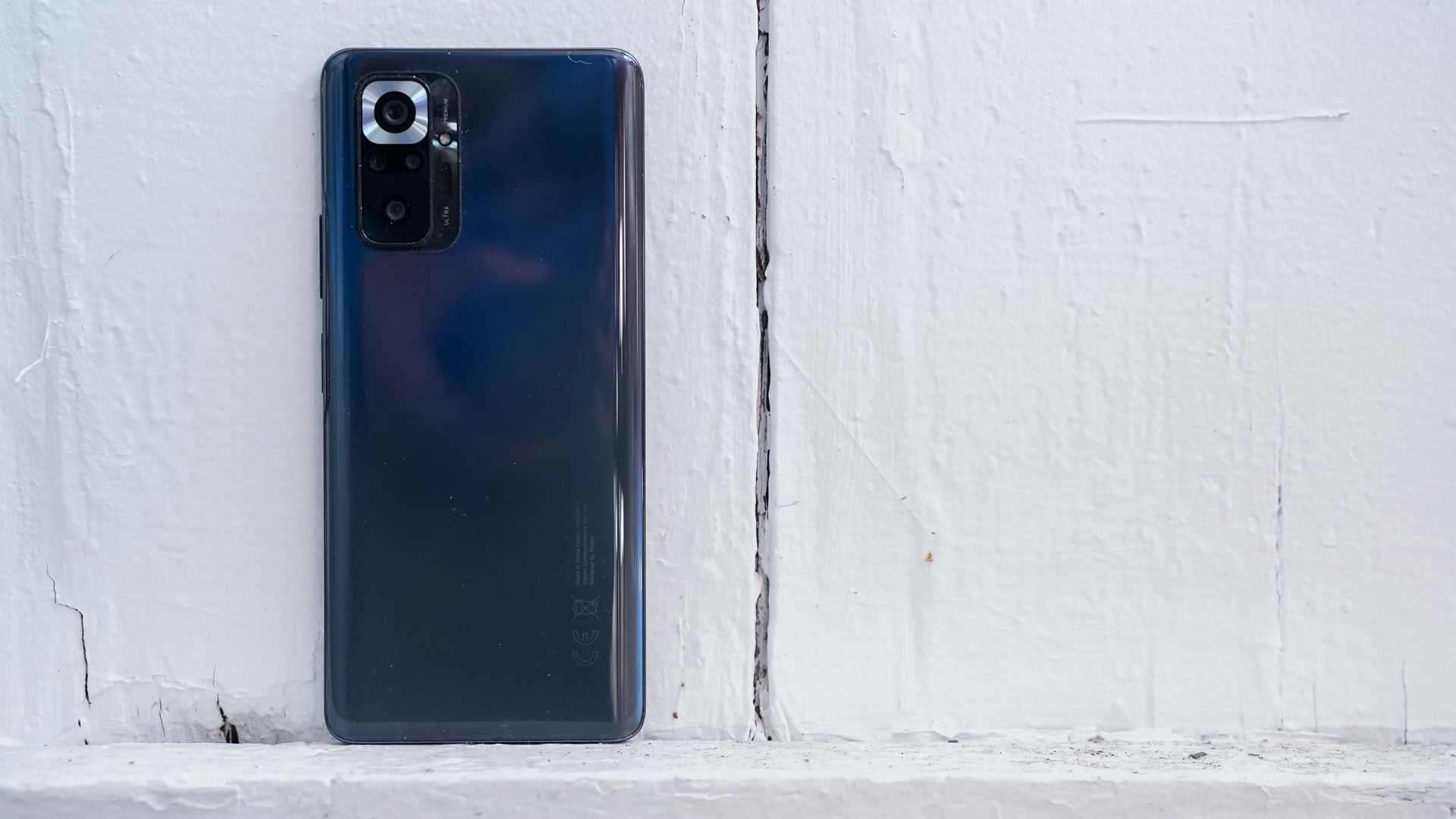
All of these phones sport 5,000mAh batteries at the very least, with the Note 10 Pro delivering a 5,020mAh battery. Eric said the phone delivered a day and a half of heavy usage with default settings (FHD+ at 60Hz). He added that nearly two days of usage was possible at times with sparing use of the phone. Switching to 120Hz resulted in a full day of moderate to heavy usage, according to our review.
The Redmi Note 10 Pro offers 33W wired charging, taking the phone to full capacity in roughly 90 minutes. That’s pretty slow, but at least you’re getting a 33W charger in the box. Xiaomi’s phone doesn’t support wireless charging though, which isn’t surprising given the price point.
The standard Redmi Note 10 also offers a 5,000mAh battery with 33W wired charging. Dhruv said the phone could easily deliver a full day of usage and get you a “fair bit” into the next day, noting that he got about seven hours of screen-on time. Need to top up the phone? Then a full charge takes 75 minutes by Dhruv’s reckoning.
Performance
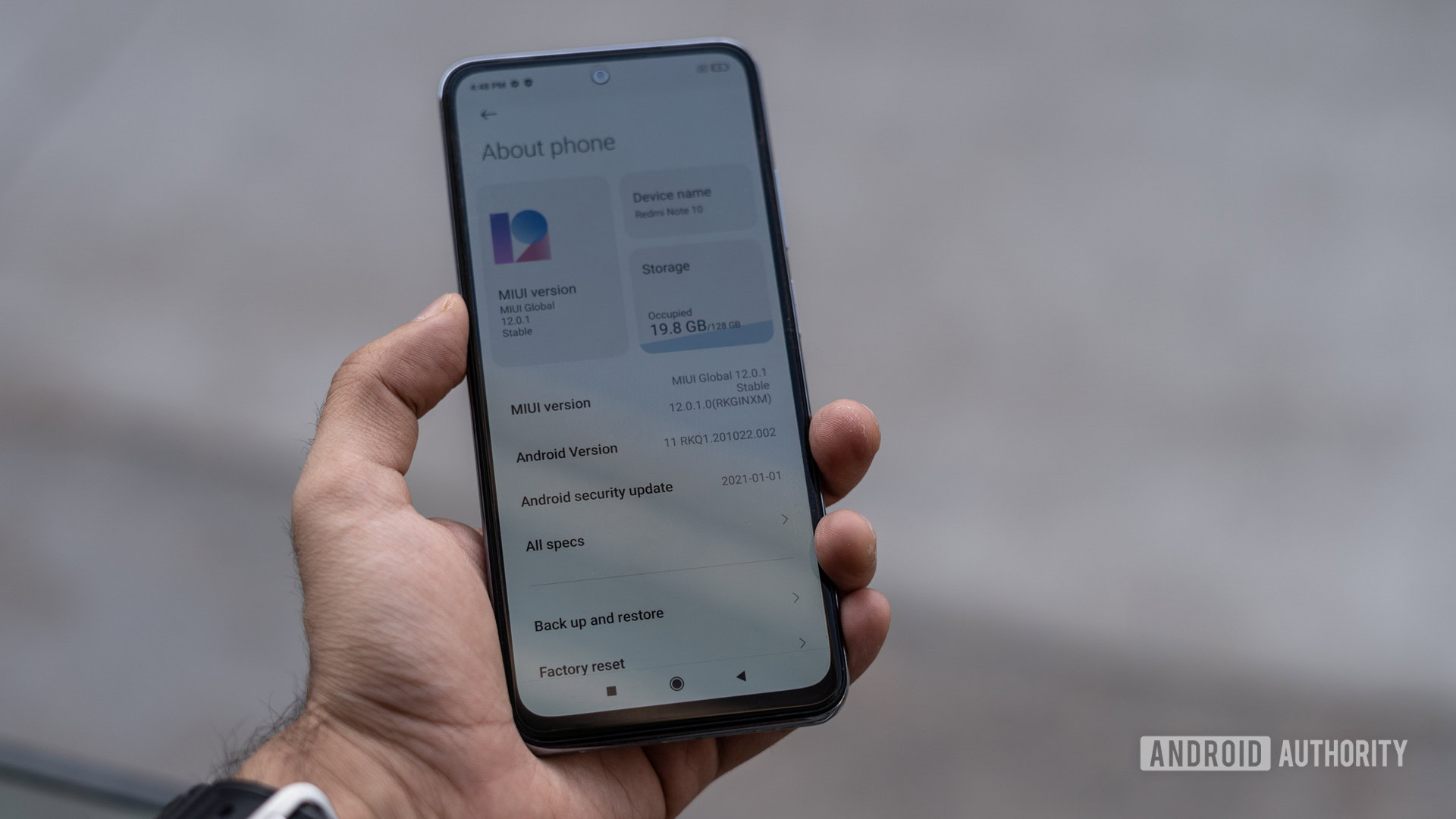
The Redmi Note 10 Pro is powered by the Snapdragon 732G SoC, along with 6GB to 8GB of RAM. Eric said he didn’t notice any lag or slowdown while browsing the web, social media, or using YouTube. So if all you want is something that keeps basic tasks going smoothly, this will do the job well.
Eric felt the phone’s silicon strain while playing games like Asphalt 9 though, saying things were a little choppier and loading times were a little longer. In other words, if you’re looking to play mobile games, you’ll want to consider other phones first. This is especially true if you plan to keep the device for a few years, as games will only become more demanding as time goes by.
Xiaomi’s base Redmi Note device is equipped with a less capable Snapdragon 678 SoC, which is a minor upgrade over the aging Snapdragon 675. Dhruv said the phone didn’t do as well in advanced games with the graphics maxed out, adding that it was noticeably warmer in these scenarios. Otherwise, he felt that day-to-day performance was pretty good.
Competition and alternatives
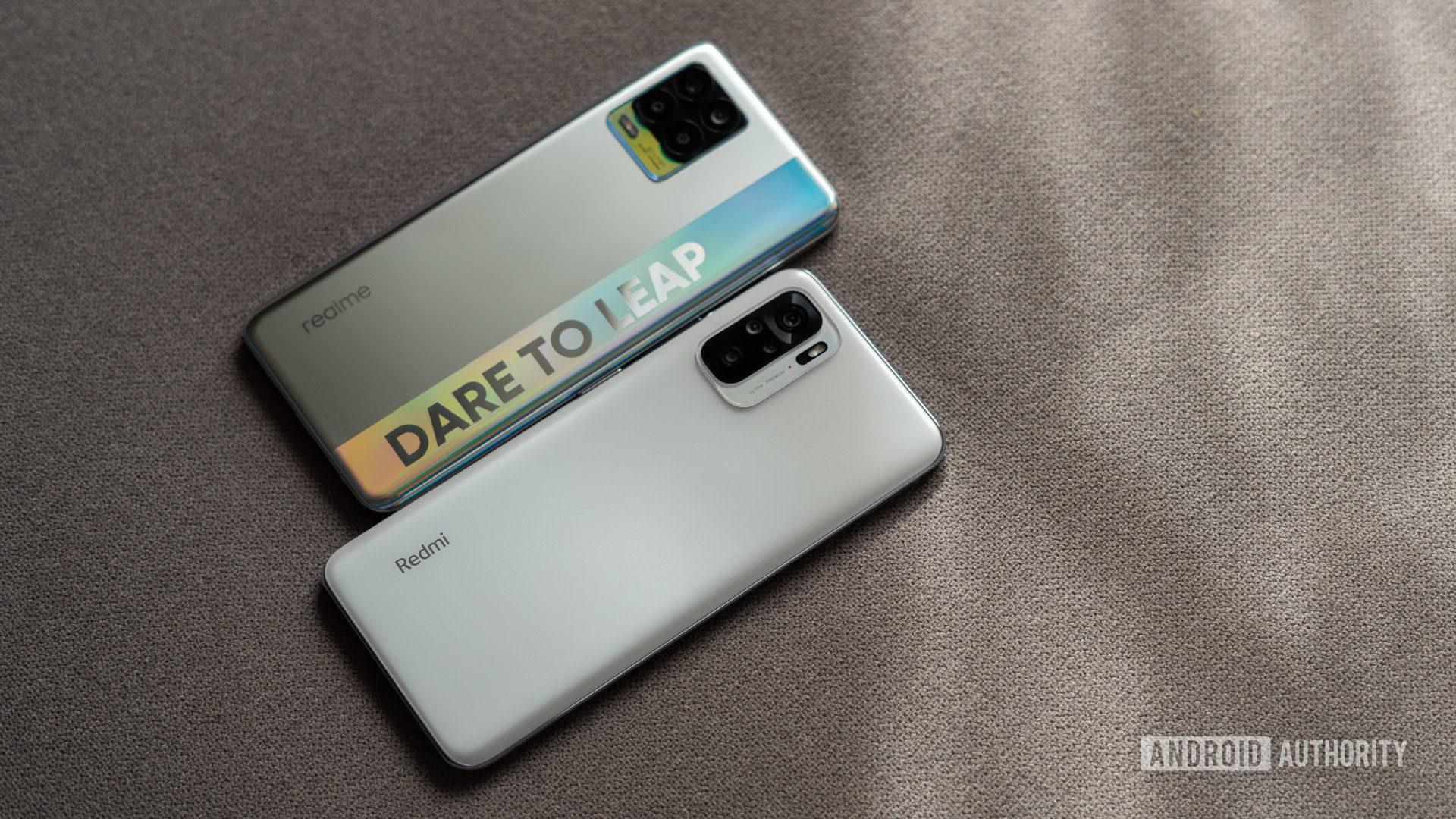
The realme 8 series is definitely worth considering if you want plenty of bang for your mid-range buck. The realme 8 Pro in particular offers a Snapdragon 720G chipset, 108MP main camera, a 60Hz OLED panel, and a 4,500mAh battery with 50W charging. Meanwhile, the standard realme 8 serves up a Helio G95 chip, 64MP main camera, 60Hz OLED screen, and a 5,000mAh battery with 30W charging. Expect to pay starting prices of Rs 17,999 (~$245) and Rs 14,999 (~$205), respectively.
Want to stay with Xiaomi? Then the POCO X3 is worth considering, as it has quite a bit in common with the Redmi Note 10 Pro. There’s a 120Hz refresh rate (albeit with an LCD panel), a Snapdragon 732G chipset, and a big battery with 33W charging. Otherwise, the €229 (~$280) price tag makes it one of the better mid-range devices in Europe. You can also opt for the Rs 18,999 (~$260) POCO X3 Pro, which uses the Snapdragon 860 chipset (in line with Snapdragon 855 series) and offers a slightly less impressive camera setup.
Google’s Pixel 4a is another budget phone worth considering as an alternative to the Redmi Note 10 range. You’re getting a 60Hz OLED screen, a Snapdragon 730G chipset that’s largely similar to the Redmi Note 10 Pro’s SoC, a longer commitment to updates, and a clean UI. That $350 price tag is also more in line with the Redmi Note 10 Pro, which is a bit of an unpleasant pill to swallow in light of the Pixel’s cutbacks compared to the Pro model. More specifically, you’re missing out on a big battery, and there’s no ultrawide rear camera either. However, the phone is hard to get in a new condition.
Samsung is also upping the ante with the Galaxy A52 4G, featuring a 90Hz OLED screen, Snapdragon 720G chipset, and IP67 rating for under $400. You do miss out on a 108MP camera and fast charging though, but it’s definitely one of the better Redmi Note 10 alternatives.
Keep in mind that the successors of all the models mentioned have already been released. You’ll have to pay more, but it may be worth it. In addition to the Redmi Note 11 series, you can check out the POCO X4 Pro, Galaxy A53, Pixel 5a, and the more recent Pixel 6a, among others.
Pricing and availability
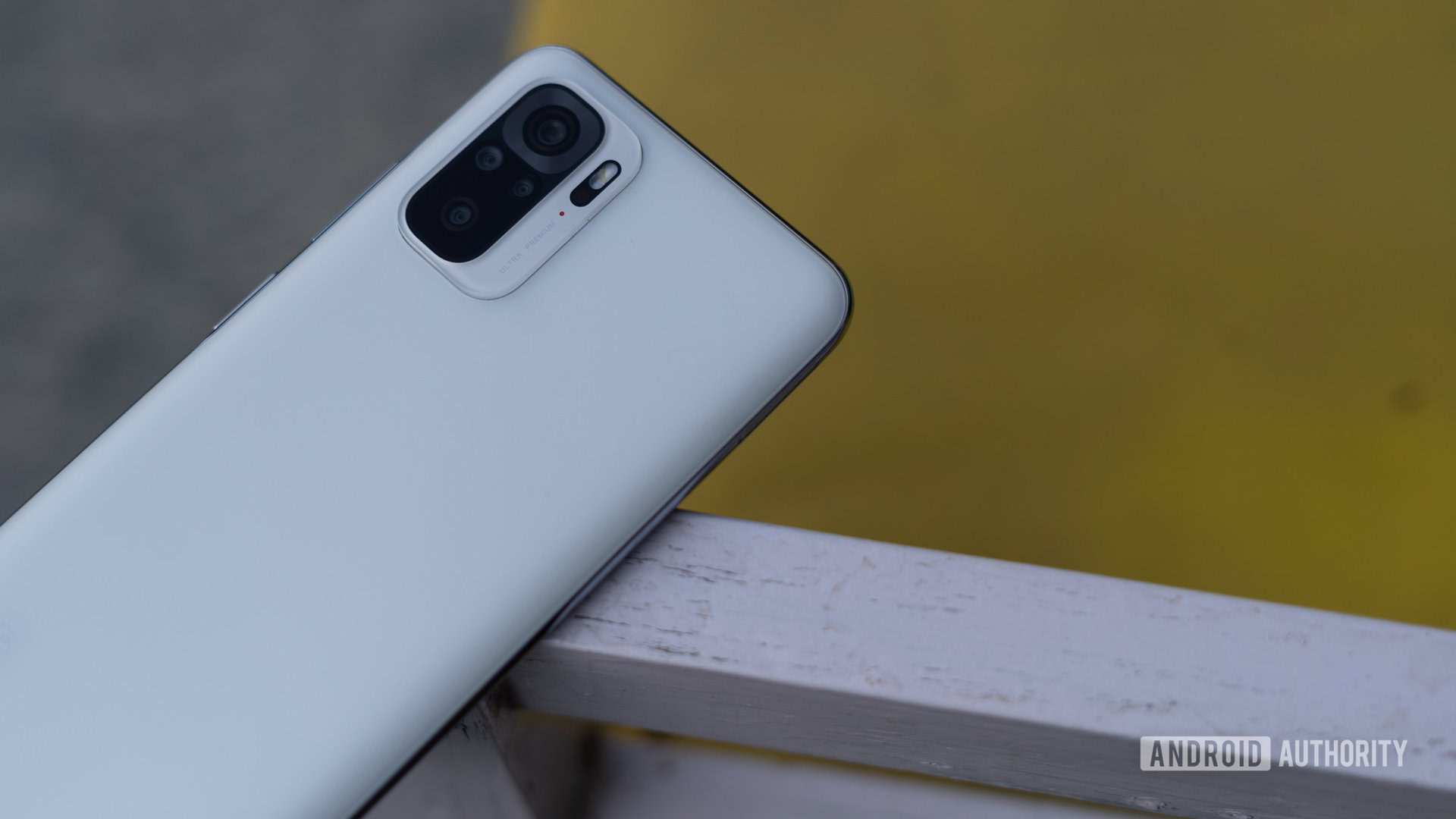
The Redmi Note 10 series is available in several regions including Europe and India. As expected, the series did not launch in the US. At least not officially — you can still get some models on Amazon.


Top Redmi Note 10 series questions and answers

Yes, all of these phones have 3.5mm ports.
Yes, they all offer microSD expansion.
All the Redmi Note 10 series devices are equipped with side-mounted fingerprint scanners.
Yes, all the phones come with chargers as well. The Note 10, Note 10S, and Note 10 Pro come with 33W chargers, while the Note 10 5G comes with a 22.5W charger.
The Note 10, Note 10S, and Note 10 Pro have IP53 splash-resistance ratings, so they’ll survive rain and other splashes but shouldn’t be immersed in water. The Note 10 5G has no significant IP rating at all. The Redmi Note 10 Japan Edition comes with an IP68 rating.
Unfortunately, Xiaomi/Redmi doesn’t sell the Redmi Note 10 family in the US, at least not officially. But you can still get them on Amazon.
